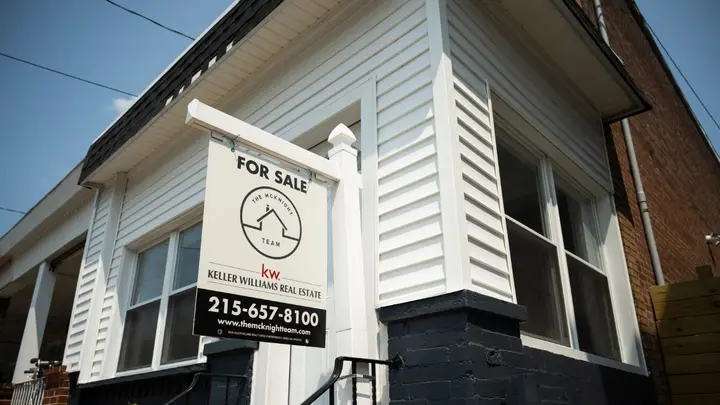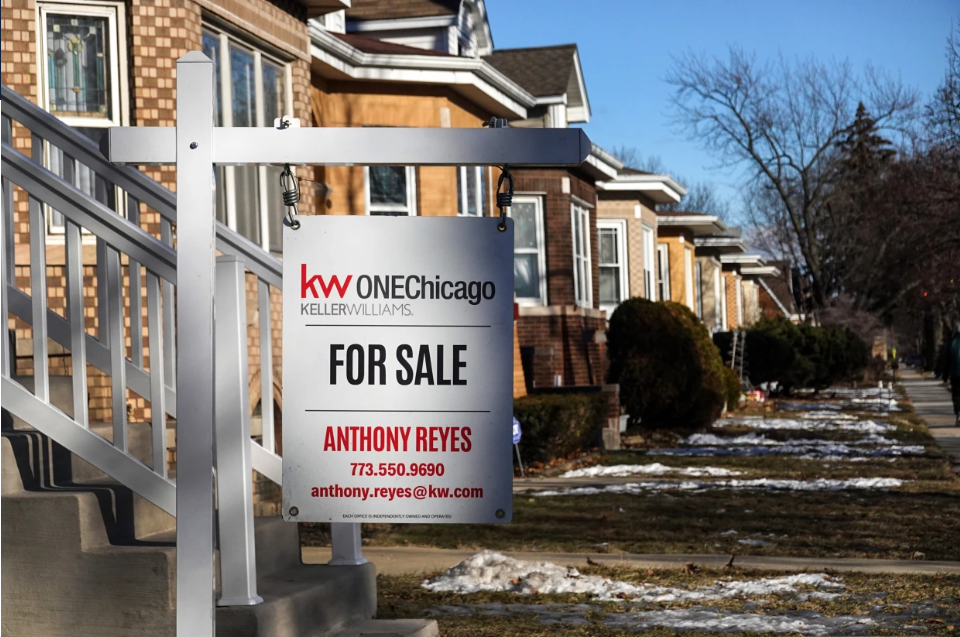The average 30-year fixed-rate mortgage has dropped to its lowest level in two years, marking a slight decrease from the previous week, though it still remains above 6%.
According to Freddie Mac’s latest Primary Mortgage Market Survey released on Thursday, the average rate for a benchmark 30-year fixed mortgage fell to 6.08%, down from 6.09% the week prior. In contrast, the same rate stood at 7.31% a year ago.
“Although this week’s decline was slight, the 30-year fixed-rate mortgage has trended down to its lowest level in two years,” noted Sam Khater, Freddie Mac’s chief economist.
The decline in mortgage rates has prompted a rise in refinance activity, presenting homeowners with opportunities to reduce their monthly mortgage payments. However, many potential homebuyers are adopting a wait-and-see approach, hoping for further decreases in rates as more economic data becomes available in the coming weeks.
Currently, approximately 80% of mortgage holders have a rate below 5%, according to a Zillow survey. Meanwhile, the average rate for a 15-year fixed mortgage has seen a slight increase to 5.16%, up from 5.15% last week, but it remains significantly lower than the 6.72% average from a year ago.
The Federal Reserve recently implemented its first rate cut since 2020, lowering the federal funds rate to a range between 4.75% and 5%. Although this rate is still above the historic lows observed during the pandemic, it represents a positive step forward for many prospective buyers. As a result, mortgage interest rates have reacted, dropping to their lowest levels since September 2022. Market analysts anticipate that additional rate cuts may be priced in during the Fed’s upcoming meetings in November and December, which could lead to further reductions in mortgage rates.
As mortgage rates hover just above 6%, many potential buyers are curious about the likelihood of a further decline next month. While predicting the extent of potential decreases is challenging, several factors will influence rates. Notably, there will be no Federal Reserve meeting in October, which suggests significant changes may be limited without further action from the Fed.
Nonetheless, other developments could affect mortgage rates. For instance, unemployment figures for September are set to be released on October 4. Poor performance in these numbers could prompt the Fed to consider further interest rate cuts, leading mortgage lenders to lower their rates in anticipation. A subsequent inflation report due on October 10 may also inform Fed decisions and, in turn, influence mortgage rates.
Overall, while it is difficult to predict how much mortgage rates may fall in October, borrowers should keep a close watch on the market for potential opportunities. Current trends indicate a 20% spike in mortgage refinance applications, as homeowners seek to take advantage of the lower rates. The Mortgage Bankers Association reported that refinance applications reached their highest level in two years, with refinances accounting for about 56% of mortgage activity recently. However, activity is still modest compared to the refinance waves of previous years.
The average 30-year mortgage rate is now over 6%, significantly lower than the recent peak of nearly 8% last fall. Despite this decrease, many homeowners who purchased their properties in recent years are likely to have secured lower rates, which could limit refinancing opportunities unless rates drop significantly further.
With input from FOX Business, CBS News, Axios.










The latest news in your social feeds
Subscribe to our social media platforms to stay tuned